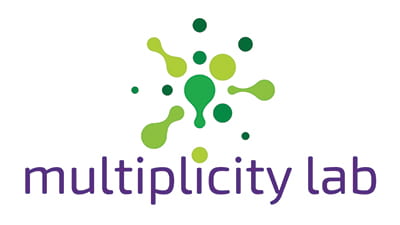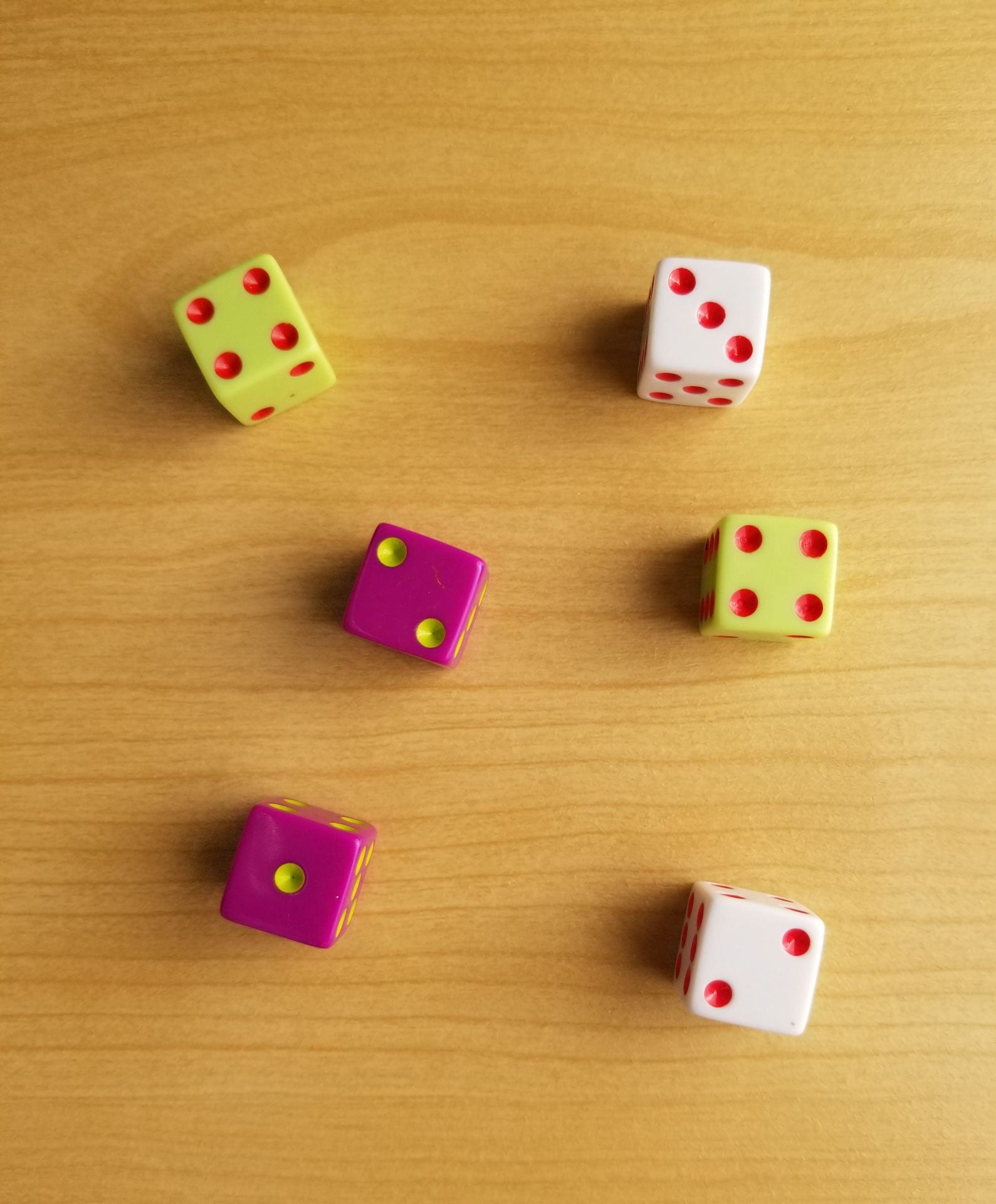Image of the Week: Why We Love Dice
February 7, 2021Why We Love Dice
Dice are compact and powerful mathematical objects that many students have in their own homes and use regularly, but we may not fully appreciate their potential. Dice as we typically see them are cultural artifacts that represent the numbers 1 – 6 in the same structured way, no matter whether the dice came as a classroom manipulative or packed in a board game. The structure of the dots tells us something about the numbers themselves. For example, 4 and 6 are shown as arrays, 2×2 and 2×3, which shows us that they are even and composed of groups of smaller numbers. Have you ever noticed that if you were of overlay the 2 and the 3, they would be the same arrangement used for 5? There is good reason for these arrangements. They aren’t just recognizable, supporting students in learning to subitize, or instantly connect small groups of objects with their number. Inscribed in the dice is something about the structure of the numbers they represent, what they are composed of, whether they are prime or composite, even or odd. When students look at dice, we are asking them to attend to and use their structure to understand number and solve problems, a key mathematical practice.
We love dice individually for how they support the development of counting ideas, but when put together, a whole new conceptual landscape opens. Students can develop ideas about composing numbers when they look at collections like the one in the Image of the Week. Students grapple with big questions, such as: How do you join numbers together? What numbers fit together into other friendly numbers like 5 or 10? In what order could you join numbers together to make joining easiest? Students can also think in equal groups when they see multiple dice of the same number, doubling, skip counting, and, later, multiplying. And all if this is long before we even get to probability. Dice have a role (roll!) at every grade level.
To multiplicity, cheers!
Jen Munson and the multiplicity lab group
Read the Archive
Get the Image of the Week
Each week we bring you a new image and activity you can do with your students tomorrow, and we spotlight a feature of the mathematical work that we think is important for students’ learning and your teaching.
Stay connected and see what's new.

